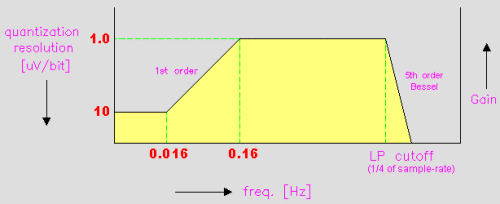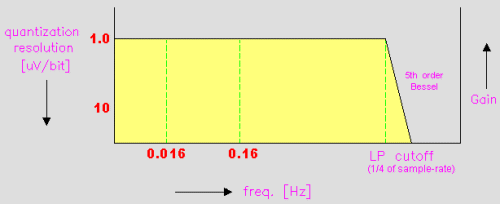|
Yes,
but only in software. There is one exception: the high pass filter
on the new ActiveOne system can be bypassed to achieve a DC response.
The decision to choose for fixed filter settings is the result
of the increased processing speed of the PCs in the last years.
With a typical PC, it is no problem to filter the data provided
by our systems (up to 500 kSamples/s) on line. Given this modern
processing power, we decided to keep the front-end simple, compact
and reliable by eliminating all switches and additional components
that would be needed for adjustable filters.
The
frequency response of our systems is plotted in the figure below.
The low-frequency signals have a lower gain to prevent saturation
of the amplifier and ADC on large electrode offset potentials.
However, note that the DC signals are not rejected. The low-pass
filter is necessary to prevent aliasing effects of high frequency
electrode and amplifier noise. We use a 5th order Bessel filter
for optimal pulse response (no overshoot). The -3 dB frequency
of the filter is placed at 1/4 of the (fixed) sample frequency.
The filter provides approx. 20 dB suppression at the Nyquist frequency
(half the sample rate). This setting has proved to be a good tradeoff
between a maximal analog bandwidth, and minimal additional noise
by aliasing.
|








